
Palermo is a city in southern Italy, the capital of both the autonomous region of Sicily and the Metropolitan City of Palermo, the city's surrounding metropolitan province. The city is noted for its history, culture, architecture and gastronomy, playing an important role throughout much of its existence; it is over 2,700 years old. Palermo is in the northwest of the island of Sicily, by the Gulf of Palermo in the Tyrrhenian Sea.

Beaux-Arts architecture was the academic architectural style taught at the École des Beaux-Arts in Paris, particularly from the 1830s to the end of the 19th century. It drew upon the principles of French neoclassicism, but also incorporated Renaissance and Baroque elements, and used modern materials, such as iron and glass. It was an important style in France until the end of the 19th century.
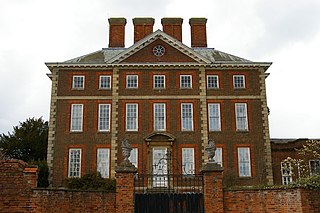
The Queen Anne style of British architecture refers to either the English Baroque architecture of the time of Queen Anne or the British Queen Anne Revival form that became popular during the last quarter of the 19th century and the early decades of the 20th century. In other English-speaking parts of the world, New World Queen Anne Revival architecture embodies entirely different styles.

Recoleta is a barrio or neighborhood of Buenos Aires, Argentina, located in the northern part of the city, by the Río de la Plata. The area is perhaps best known to be the home of the distinguished Recoleta Cemetery. It is a traditional upper-class and conservative neighborhood, with some of the priciest real estate in the city.
Giovanni Battista Vaccarini was a Sicilian architect, notable for his work in the Sicilian Baroque style in his homeland during the period of massive rebuilding following the earthquake of 1693. Many of his principal works can be found in the area in and around Catania.
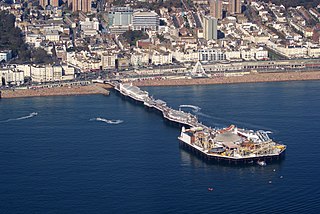
The Brighton Palace Pier, commonly known as Brighton Pier or the Palace Pier, is a Grade II* listed pleasure pier in Brighton, England, located in the city centre opposite the Old Steine. Established in 1899, it was the third pier to be constructed in Brighton after the Royal Suspension Chain Pier and the West Pier, but is now the only one still in operation. It is managed and operated by the Eclectic Bar Group.
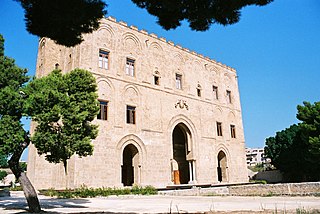
The Zisa is alternatively listed as either a castle or palace, and located in the western area of Palemo, region of Sicily, Italy. The edifice was begun around 1165 by an Moorish craftsman under the rule of the Norman conquerer of Sicily, king William I of Sicily. It was not finished until 1189 was under the rule of William II. It is presently open to the public for tours.

The Palacio de Correos de México also known as the "Correo Mayor" is located in the historic center of Mexico City, on the Eje Central near the Palacio de Bellas Artes. It was built in 1907, when the Post Office here became a separate government entity. Its design and construction was the most modern of the time, including a very eclectic style mixing several different traditions mainly Neo-Plateresque into a very complex design. In the 1950s, the building was modified in a way that caused stress and damage, so when the 1985 earthquake struck Mexico City, this building was heavily damaged. In the 1990s, restoration work has brought the building back to original construction and appearance.
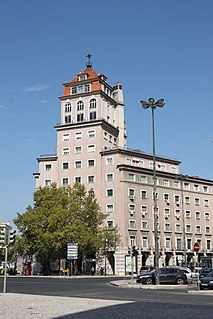
Português Suave was an architectural style promoted by the Portuguese Estado Novo regime, essentially during the 1940s and the early 1950s. Officially promoted by the Portuguese government at the time as Estilo Português, it became more popularly known as "Português Suave" after a brand of cigarretes of the same name. This architectural style is also known Estado Novo style, but this last denomination is not very correct, since during the Portuguese New State Regimen diverse architectural styles have been applied in public buildings.

Avenida Santa Fe is one of the principal thoroughfares in Buenos Aires, Argentina. The artery is essential to the imaginary axis of Barrio Norte in Buenos Aires, comprising the areas influenced by the route of the avenue through Retiro, Recoleta and Palermo neighborhoods, it is considered one of the main shopping and strolling areas of the city, its many boutiques range from elegant to edgy, which has led it to be dubbed the 'Avenue of Fashion'. Upscale Alto Palermo, at Avenida Coronel Díaz, is one of the city's best-known vertical malls. Avenida Santa Fe is also an attraction for its architecture, strongly reminiscent of Paris. Its name pays homage to the eponymous province in Argentina.

The Western Pavilion is an exotically designed early 19th-century house in the centre of Brighton, part of the English city of Brighton and Hove. Local architect Amon Henry Wilds, one of the most important figures in Brighton's development from modest fishing village to fashionable seaside resort, built the distinctive two-storey house between 1827 and 1828 as his own residence, and incorporated many inventive details while paying homage to the Royal Pavilion, Brighton's most famous and distinctive building. Although the house has been altered and a shopfront inserted, it is still in residential use, and has been listed at Grade II* by English Heritage for its architectural and historical importance.
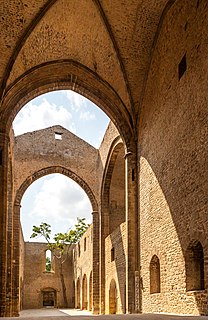
Santa Maria dello Spasimo, or Lo Spasimo, is an unfinished Catholic church in the Kalsa neighborhood in Palermo, Sicily, on Via dello Spasimo.

Neoclassical architecture appeared in Belgium during the period of Austrian occupation in the mid-18th century and enjoyed considerable longevity in the country, surviving through periods of French and Dutch occupation, and the birth of Independent Belgium, surviving well into the 20th century.
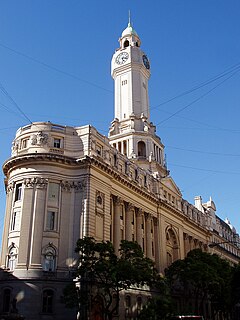
The Buenos Aires Legislature Palace houses the Legislature of the City of Buenos Aires, Argentina. It is an architectural landmark in the city's Montserrat district, situated in a triangular block bounded by the streets Hipólito Yrigoyen Street, Presidente Julio A. Roca Avenue and Perú Street. Built of grey granite, it has a Neoclassical design. The building is open to the public on week-days only. The building contains the Esteban Echeverría Library, Salón Rosado, and a carillon which, when it was installed in 1930, was the largest in South America.

The Church of Saint Teresa is a Baroque Roman Catholic church, located on Piazza della Kalsa in the ancient quarter of the Kalsa of the city of Palermo, region of Sicily, Italy.
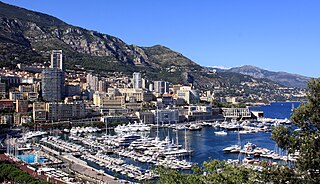
Monaco is known for its wide range of architecture for a small country. The geography of Monaco, which consists of sharp hills and narrow coastline, influences the Monacan architecture. The narrow roads have led to architectural construction being built into the hills in limited amounts of space. This limited space has, more recently, the issue of construction in Monaco has created social disruption.

The Palace of the Deputation of Pontevedra, in Pontevedra, Spain, is the seat of the provincial deputation of this Galician city. It is located between the Alameda de Pontevedra and the Palm Trees Park.

Romanian Revival architecture is an architectural style that has appeared in late 19th century in Romanian Art Nouveau, initially being the result of the attempts of finding a specific Romanian architectural style. The attempts are mainly due to the architects Ion Mincu (1852–1912), and Ion N. Socolescu (1856–1924). The peak of the style was the interwar period. The style was a national reaction after the domination of French-inspired Classicist Eclecticism. Apart from foreign influences, the contribution of Romanian architects, who reinvented the tradition, creating, at the same time, an original style, is manifesting more and more strongly. Ion Mincu and his successors, Grigore Cerchez, Cristofi Cerchez, Petre Antonescu, or Nicolae Ghica-Budești declared themselves for a modern architecture, with Romanian specific, based on theses such as those formulated by Alexandru Odobescu around 1870:
"Study the remains – no matter how small – of the artistic production of the past and make them the source of a great art (...) do not miss any opportunity to use the artistic elements presented by the Romanian monuments left over from old times; but transform them, change them, develop them ..."

The Palazzo Butera is a Baroque-style aristocratic palace located facing the Mediterranean in the ancient quarter of Kalsa of central Palermo, region of Sicily, Italy. On the shoreside, the long facade has a wide terrace, built atop the base of the former walls and called Passeggiata delle Cattive, in front of this is the park Foro Italico, in front, rising just south of Porta Felice and Via Vittorio Emanuele ; the access to the palace is from the land-side street of Via Butera.
The Monument to Ignazio Florio is a bronze monumental sculpture, dedicated to the Sicilian industrialist, erected in 1909 on Piazza Florio, in Palermo, Sicily.




















